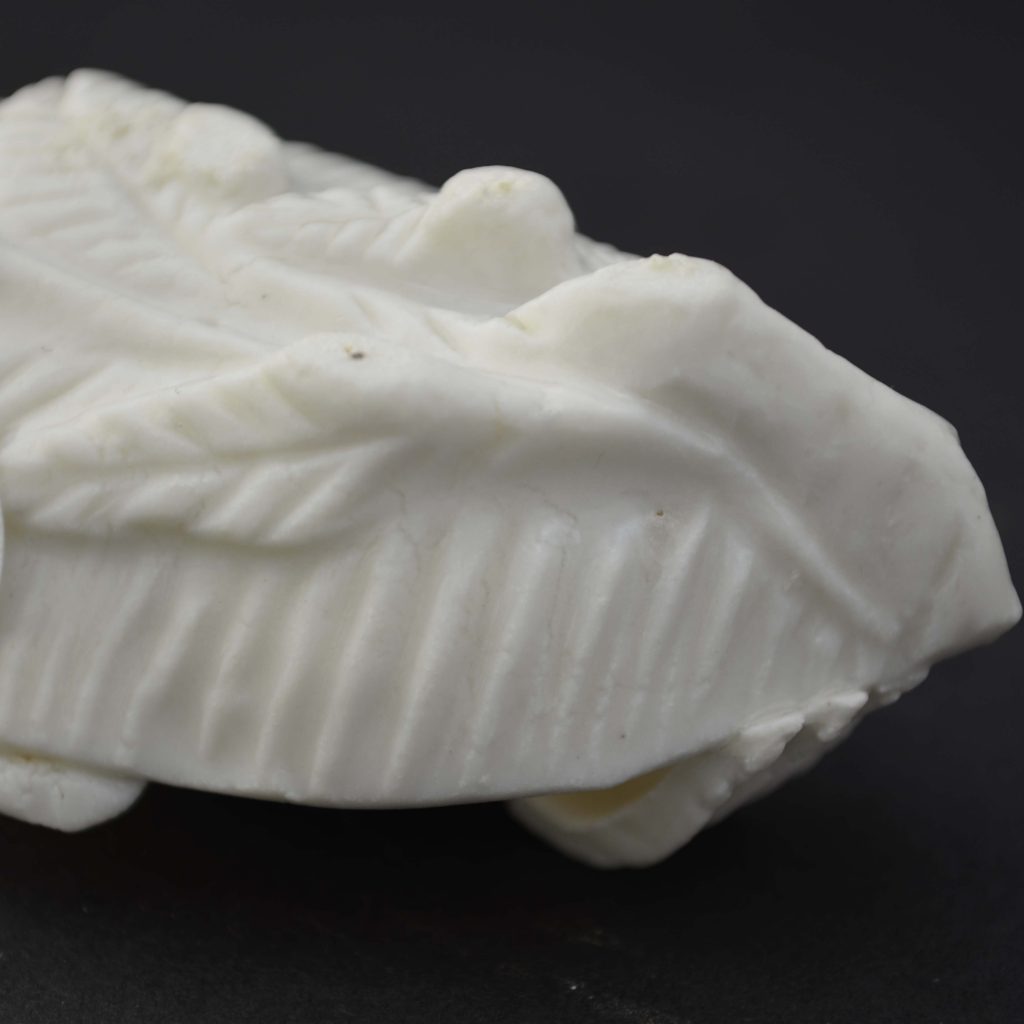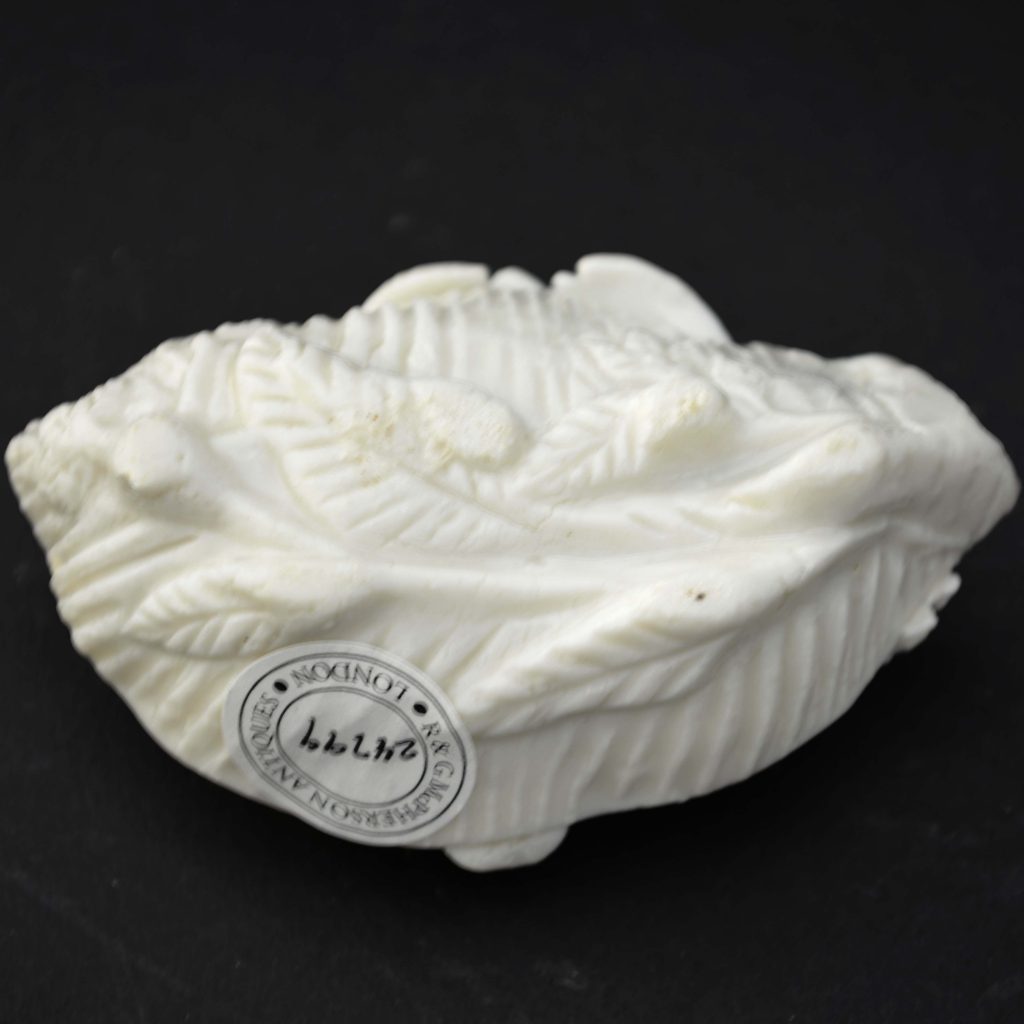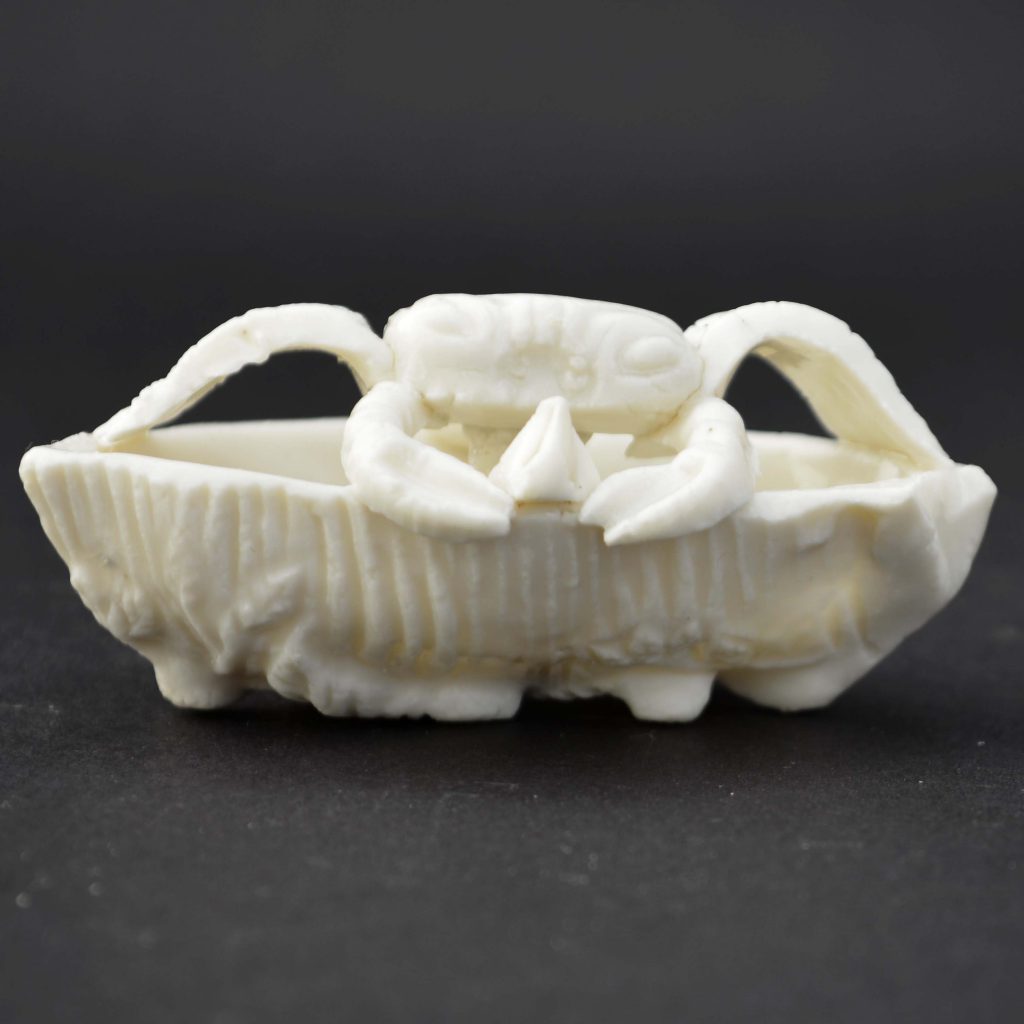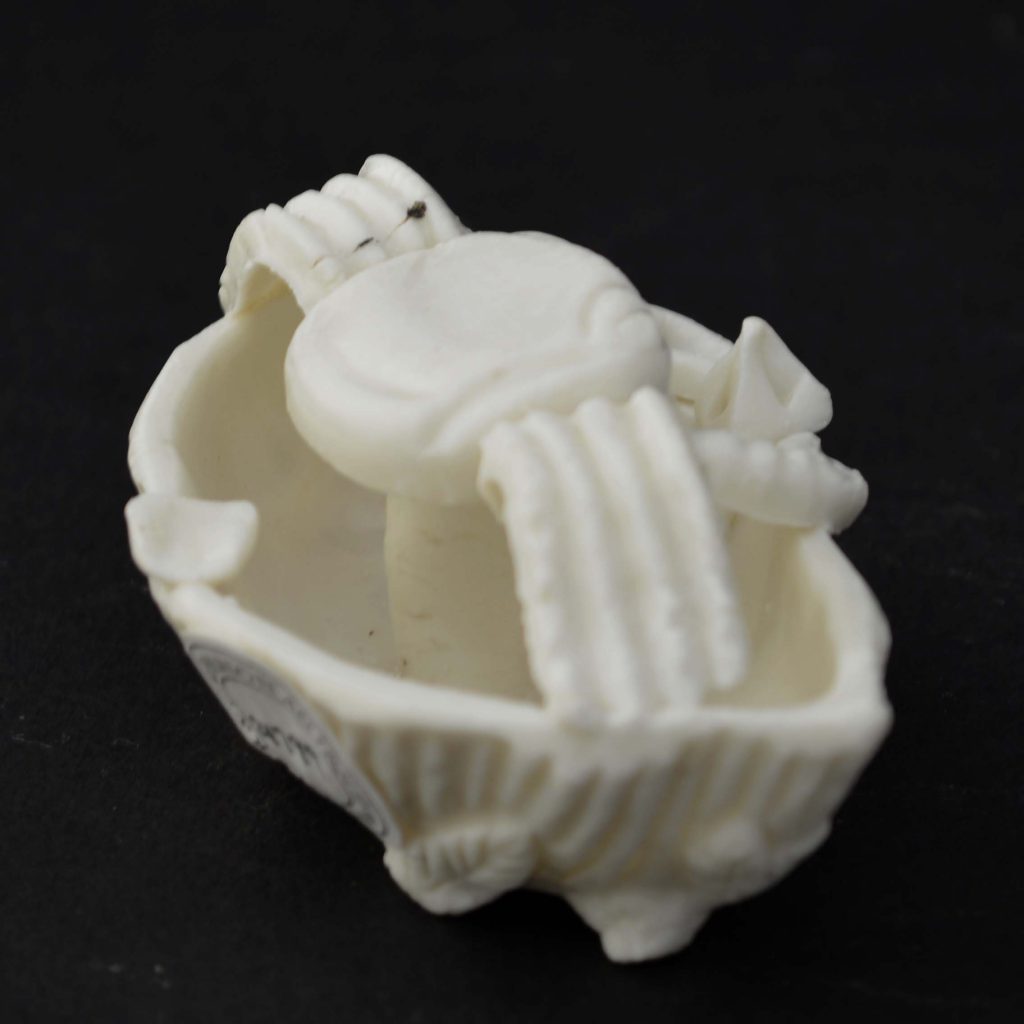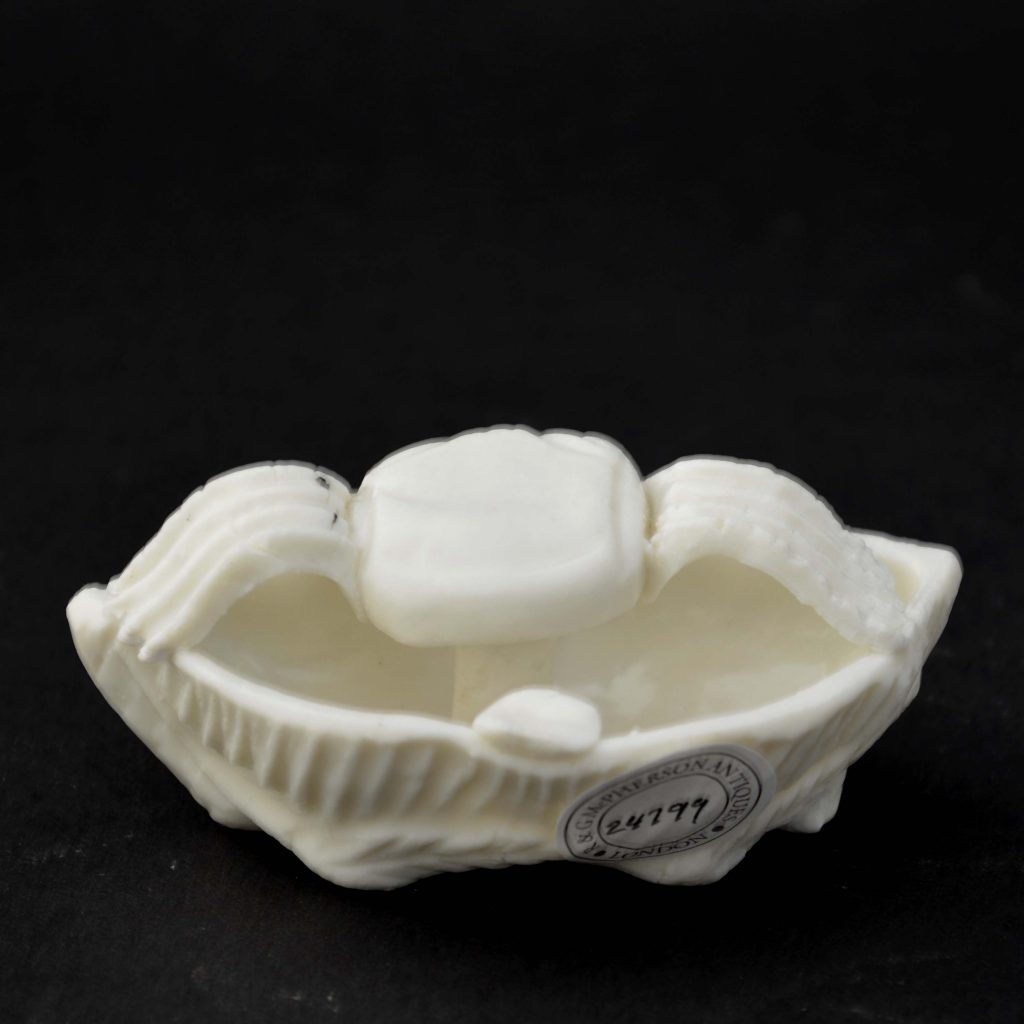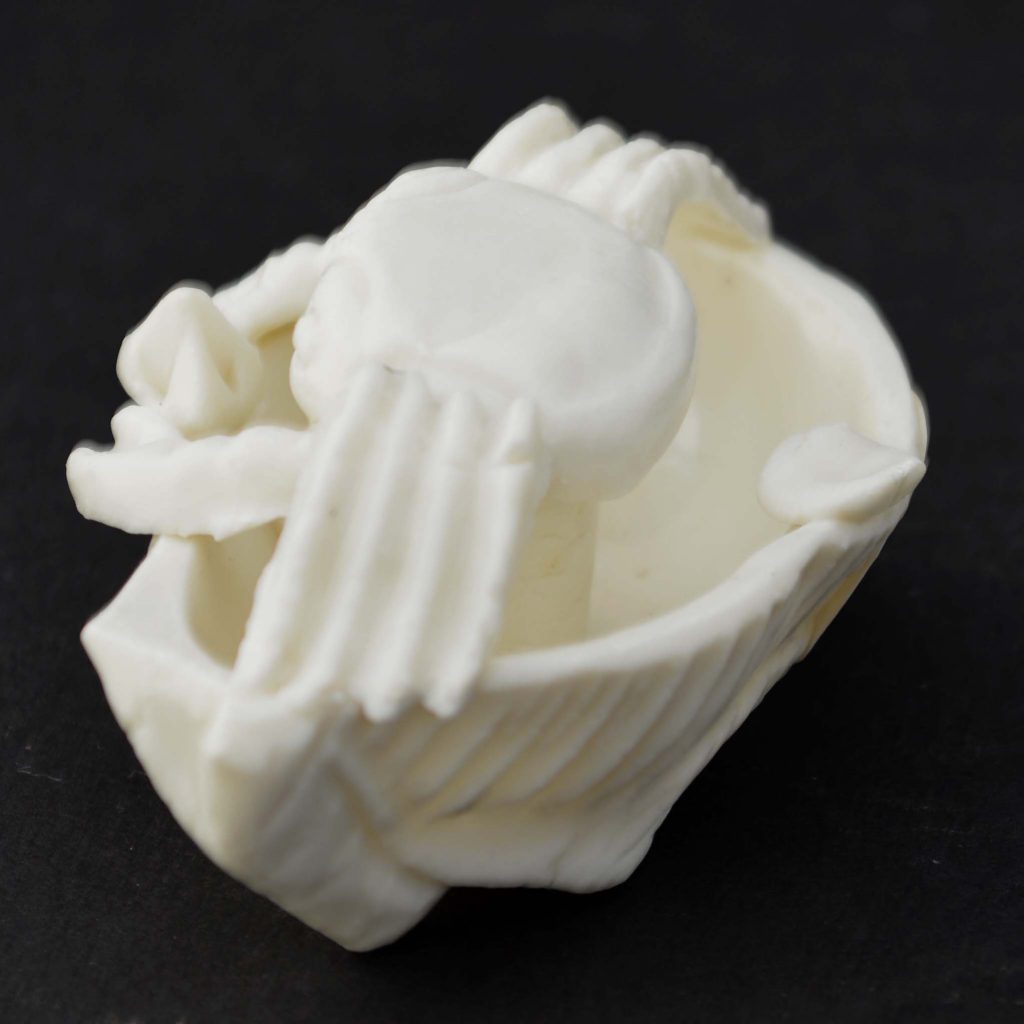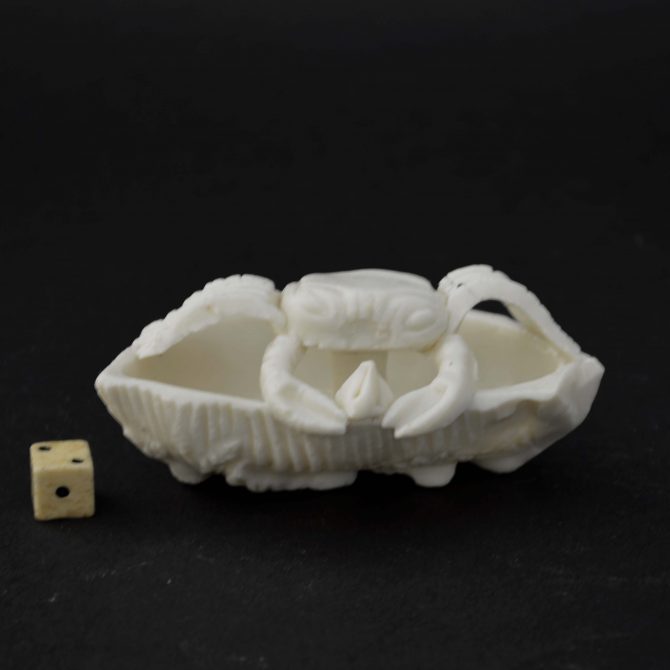
A Rare 17th Century Blanc de Chine Porcelain Crab Form Water Pot from the Vung Tau Cargo, Kangxi Period c.1690-1700.
A rare small Kangxi Blanc de Chine porcelain water pot from the Vung Tau Cargo, Dehua kilns, Fujian province c.1690-1700. Modelled as a crab astride a lotus leaf and flower, as it rests on a large leaf.
SOLD
- Condition
- In excellent condition with only very minimal glaze degradation to immersion in sea water. A firing crack across the legs of the crab.
- Size
- Length : 8 cm ( 3 1/4 inches)
- Provenance
- The Vung Tau Cargo, Chinese Export Porcelain. Christie`s Amsterdam, 7th and 8th of April 1992 (no label). From a small collection of pieces from the Vung Tau cargo.
- Stock number
- 24799
- References
- For a Kangxi Blanc de Chine porcelain water pot from the Vung Tau Cargo of this form from c.1690 see : Porcelain From The Vung Tau Wreck, The HallStrom Excavation (Christian J.A. Jorg and Michael Fletcher published by Sun Tree Publishing Ltd. ISBN 981-04-5208-X) page 86 Fig. 86. For a Blanc de Chine Kangxi porcelain water pot, dated to c.1690, of very similar form but with the addition of applied prunus flower-heads see : Blanc de Chine (Introduction by John Ayers, S.Marchant & Son, 2006. ISBN 0-9554009-0-2) page 93, plate 61.
Information
Blanc de Chine Porcelain :
The porcelain known in the West as Blanc de Chine was produced 300 miles south of the main Chinese kiln complex of Jingdezhen. The term Blanc de Chine refers to the fine grain white porcelain made at the kilns situated near Dehua in the coastal province of Fujian, these kilns also produced other types of porcelain. A rather freely painted blue and white ware, porcelain with brightly coloured `Swatow` type enamels as well as pieces with a brown iron-rich glaze. However it is the white blanc de Chine wares that have made these kilns famous. The quality and colour achieved by the Dehua potters was partly due to the local porcelain stone, it was unusually pure and was used without kaolin being added. This, combined with a low iron content and other chemical factors within the body as well as the glaze, enabled the potters to produce superb ivory-white Blanc de Chine porcelain.
A related Blanc de Chine porcelain crab water pot c.1640-1680.
From the collection of Mr. Alan Green.
Sold by R and G McPherson Antiques (number 20302) now in a private English collection.
Blanc de Chine Porcelain From Shipwrecks :
By far the largest category of ceramics found on shipwrecks is blue and white porcelain from the kilns at Jingdezhen. Blanc de chine porcelain is sometimes found among the cargo`s recovered but the majority of cargo`s don`t contain this white porcelain from the Dehua kilns in Fujian province. Because blanc de chine porcelain is so difficult to date pieces recovered from shipwrecks are especially important in establishing a credible chronology. Many blanc de chine forms were used over a very long time, indeed even over hundreds of years, pieces recovered from shipwrecks enable subtle changes that occurred to be attributed to precise periods. The 579 objects recovered from the Hatcher wreck of c.1643 represent the most important group of blanc de chine porcelain found so far. 439 of the pieces were bowls, most of which were made as nests of five, but many other forms are represented including archetypal blanc de chine forms such as censers, a guanyin, trick cups as well as standard forms such as vases. Small models of guanyin were also recovered from the Vung Tau Cargo of 1690 as well as acolytes from larger guanyin figures. There were many bowls, dishes, boxes with covers as well as a few water-droppers. There was white porcelain found on the wreck of the Geldermalsen, however this Nanking Cargo porcelain came from the Jingdezhen kilns and so is not blanc de chine.
